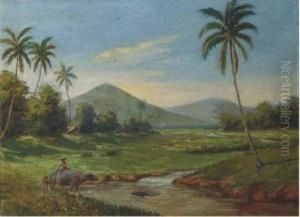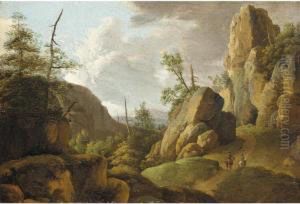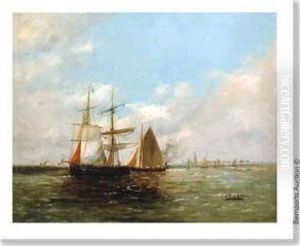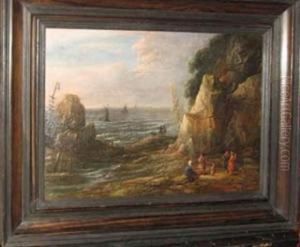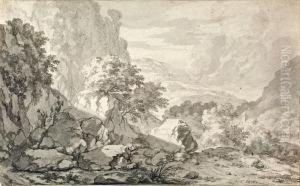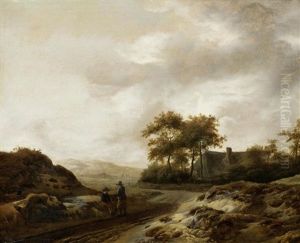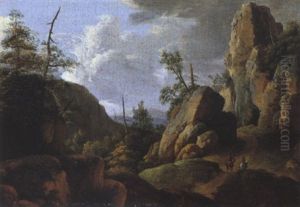Jan Van Aken Paintings
Jan van Aken was a Dutch Golden Age painter and engraver known for his detailed landscape and architectural paintings. Born in 1614, he was part of a period in Dutch art characterized by a great interest in light, shadow, and perspective, which was reflected in the works of many artists of the time. Although not as famous as some of his contemporaries, van Aken contributed to the rich tapestry of Dutch art during its most celebrated era.
Jan van Aken was primarily active in Amsterdam, where he developed his style. His works often depicted cityscapes and buildings with a high degree of accuracy, suggesting he may have had an interest or background in cartography or architectural drawing. Like many artists of his time, van Aken paid great attention to the play of light and atmosphere in his work, striving to capture the mood of a scene as much as its visual details.
Unfortunately, little is known about van Aken's life beyond his artwork. There are few historical records detailing his personal life or training. It's believed that he was influenced by other Dutch artists who focused on landscapes and cityscapes, which were popular subjects due to the Dutch Republic's commercial prosperity and the urban expansion of the period. Van Aken's engravings and paintings would have appealed to the growing middle class's desire for art that depicted the world around them.
Jan van Aken passed away in 1661. His work, while not achieving the widespread acclaim of some of his peers, provides a valuable glimpse into Dutch society and the urban environment of the 17th century. Today, his paintings can be seen as historical documents as well as artistic endeavors, offering insight into the urban landscape of the Netherlands during a time of significant change and growth.
